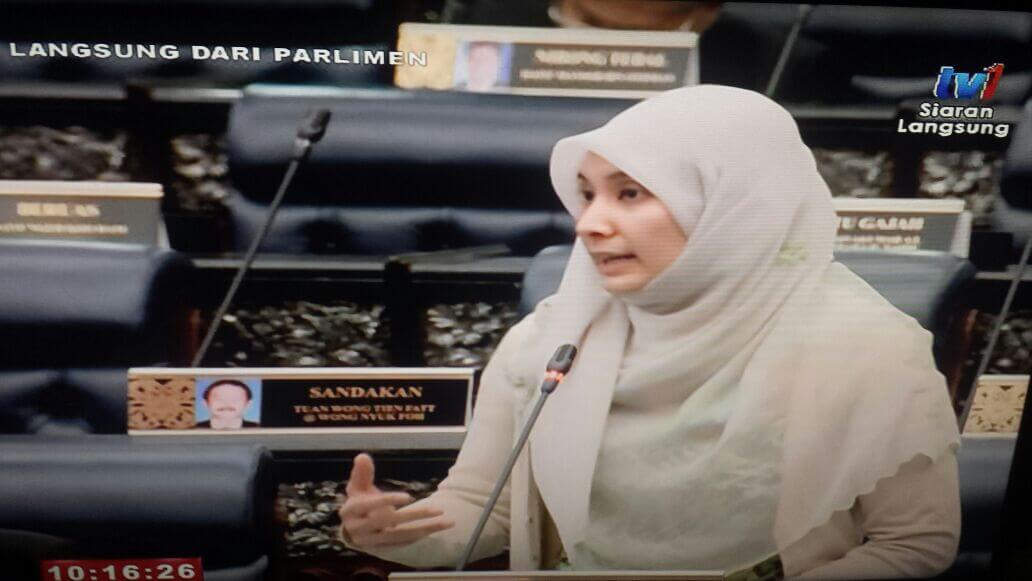Malaysia’s renewable energy (RE) industry is uncompetitive. The key barrier is the high cost of generating electricity from renewables, as compared to the conventional fossil fuels in Malaysia which are subsidised. For the private sector to promote the growth of our limited RE industry, the investment costs must first be made reasonable — through a hike in Feed-in Tariffs (FiT).
On 30 March 2017, I questioned the Minister of Energy, Green Technology and Water about the uncompetitive pricing of Malaysia’s FiT. FiT is an incentive system for electricity producers who leverage renewable energy sources, making our energy industry more competitive. In his answer, KeTTHA minister Datuk Seri Maximus Johnity Ongkili ascertained that our FiT rates were determined with advice from external consultants. If that is the case, why do we not see an increase of investments in RE projects?
The Malaysian government implemented the FiT system in December 2011. With FiT, power utilities such as Tenaga Nasional Berhad (TNB) are obliged to buy electricity from companies which produce electricity using renewable energy sources at a fixed premium price. Although a well-intentioned policy, sadly, the results of Malaysia’s FiT system has been lacklustre. This is evident through the results of our lapsed 10th Malaysia Plan. Although Malaysia targeted to achieve 985 MW[1] in renewable energy capacity, we only reached 300 MW[2] when the Plan expired in 2015.
Firstly, this is due to the reality that Malaysia’s current FiT rates are dismally low. Renewable energy producers who leverage biogas, biomass, small hydro, and geothermal sources are only able to receive RM 0.24-0.47 per Kilowatt hour of energy generated (or 0.05-0.10 USD/kWh). When put in perspective, the best FiT rate that renewable energy producers enjoy in Malaysia is worse than the lowest FiT rate that renewable energy producers enjoy in our less-developed, neighbouring countries in our region. For example, Indonesia’s FiT rates (0.13-0.22 USD/kWh) is more than twice our country’s rates. Is it any surprise that Malaysia’s renewable energy industry is small, uncompetitive and growing at a lethargic pace?
Thus, Malaysia would do well to emulate Thailand, where the FiT rate was increased, and where RE consequentially grew. Due to a higher FiT, the proportion of renewable energy used in Thailand grew from 0.5% of all energy sources in 2006 to 8.5% in 2015.
Secondly, our electricity industry is a monopoly, raising the costs for renewable electricity producers to enter the market. Tenaga Nasional Berhad (TNB) is the only company that supplies electricity directly to households in Malaysia, therefore able to deny other electricity producers a reasonable return on capital. This puts the mammoth TNB and the smaller RE power generation companies at unequal bargaining positions. It is important to note that this market failure in Malaysia’s energy industry is also identified as a problem by our government in the National Renewable Energy Policy Action Plan as early as 2008.[3] Increasing the FiT rates will mitigate this problem by lowering the transaction costs for renewable electricity producers.
The development of RE is driven mainly by private investment, but our country’s aspirations to advocate sustainable energy falls short, given our haphazard policy and regulatory frameworks. Interestingly, in comparison to our paltry FiT rates which deter investors, nonrenewable energy sources such as fossil fuel are heavily subsidised in Malaysia. The government makes our energy staple, fossil fuel accessible to the rakyat through subsidies; it should also increase the prevalence of renewable energy usage by lowering its costs.
We are well aware of Malaysia’s falling education standards, and the increasingly uncompetitive ringgit. But one benchmark in becoming a developed country that has escaped us too often is our renewable energy target. By 2020, Malaysia should achieve 2080 MW[4] in renewable energy capacity. With three years remaining on the clock, will we be able to improve our performance by 700 percent ever since we achieved 300 MW in 2015? I urge the government to review our policies, specifically the FiT rates to mobilise private investment in renewable energy.
NURUL IZZAH ANWAR
Member of Parliament for Lembah Pantai
Vice President and Election Director of KEADILAN
________________
[1] https://www.pmo.gov.my/dokumenattached/RMK/RMK10_Eds.pdf
[2] https://www.google.com/url?sa=t&rct=j&q=&esrc=s&source=web&cd=1&cad=rja&uact=8&ved=0ahUKEwjd2PzGiYDTAhXMfrwKHaIOADIQFggbMAA&url=http%3A%2F%2Fwww.mida.gov.my%2Fhome%2Fadministrator%2Fsystem_files%2Fmodules%2Fphoto%2Fuploads%2FMIDA-Biomass-Conference-2015-SEDA.ppt&usg=AFQjCNG56yP2BCFchf0ZdxWx0Re-_j8kNA&sig2=lol2t-zV0o7y9nyvyfARkg
[3] http://seda.gov.my/go-home.php?omaneg=00010100000001010101000100001000000010100001000110&id=263
[4] http://www.pmo.gov.my/dokumenattached/RMK/RMK11_E.pdf


